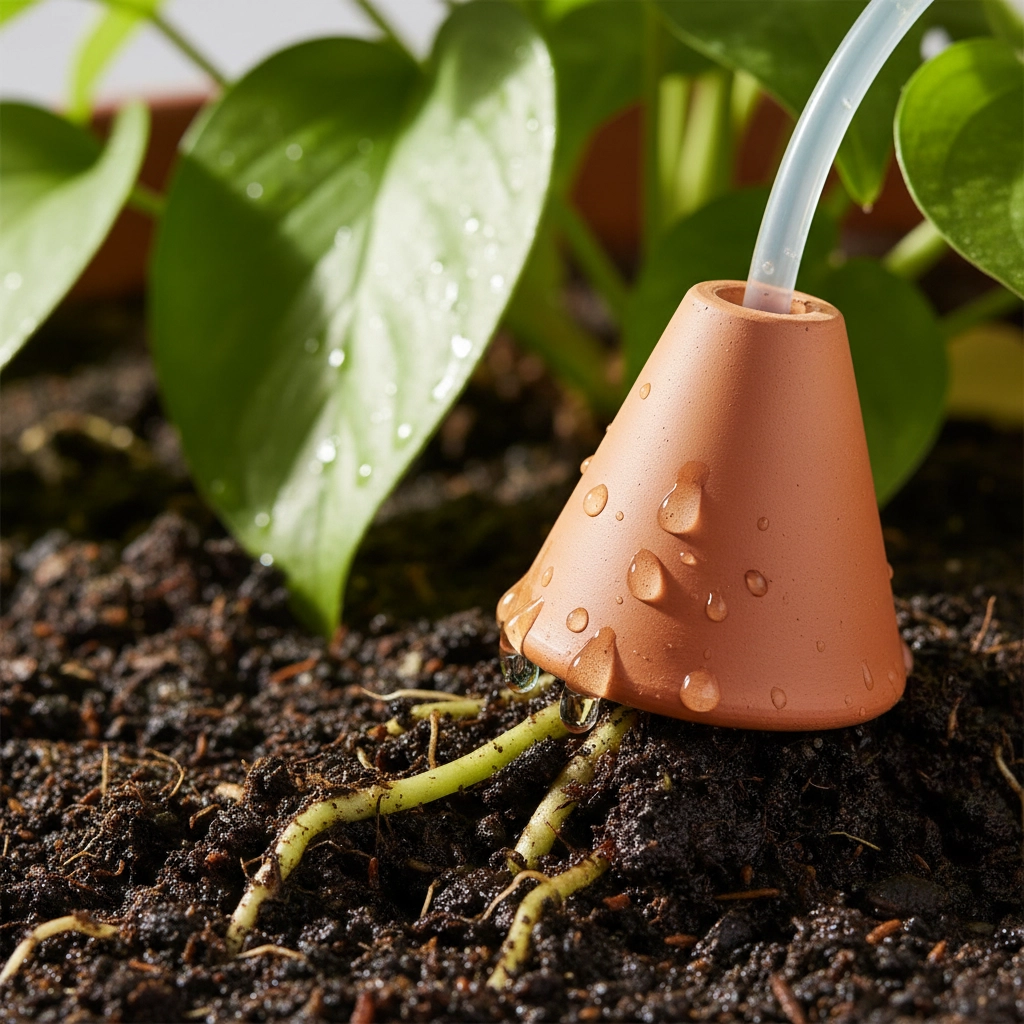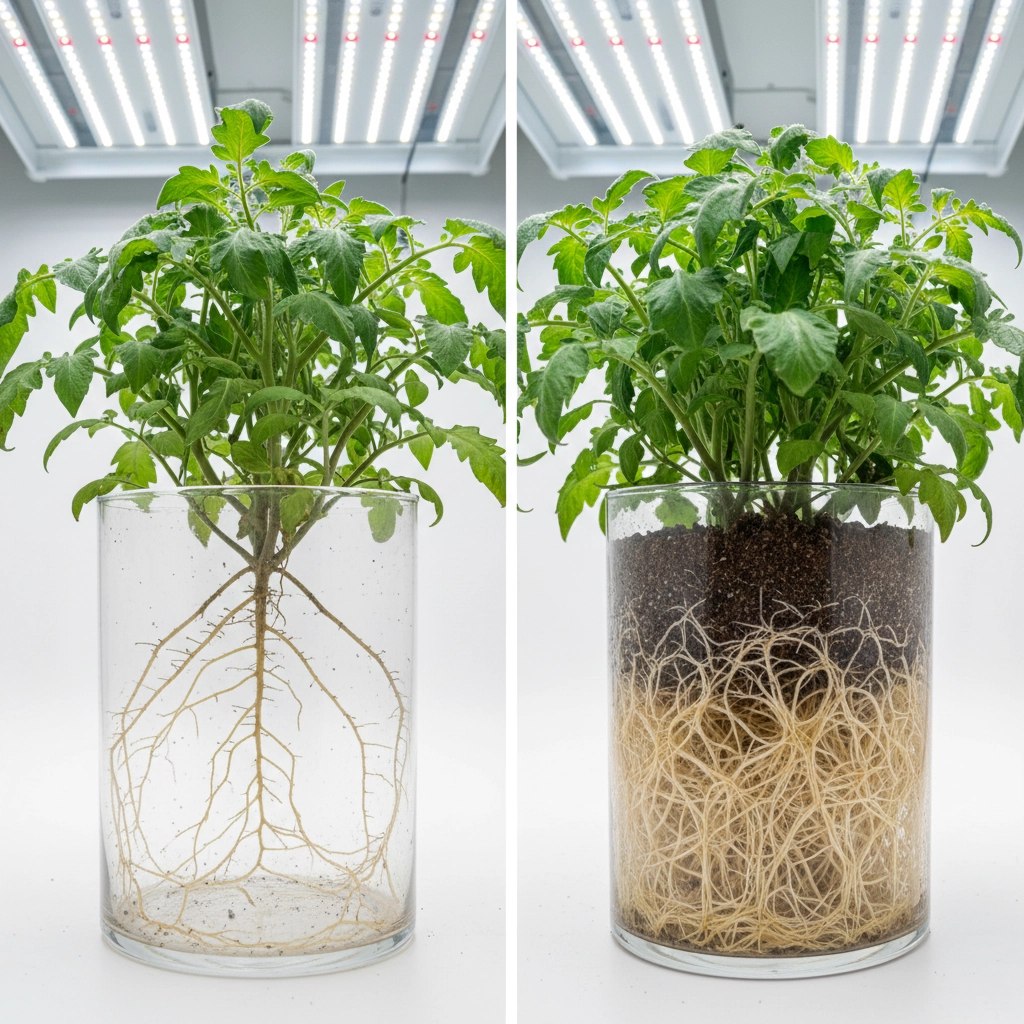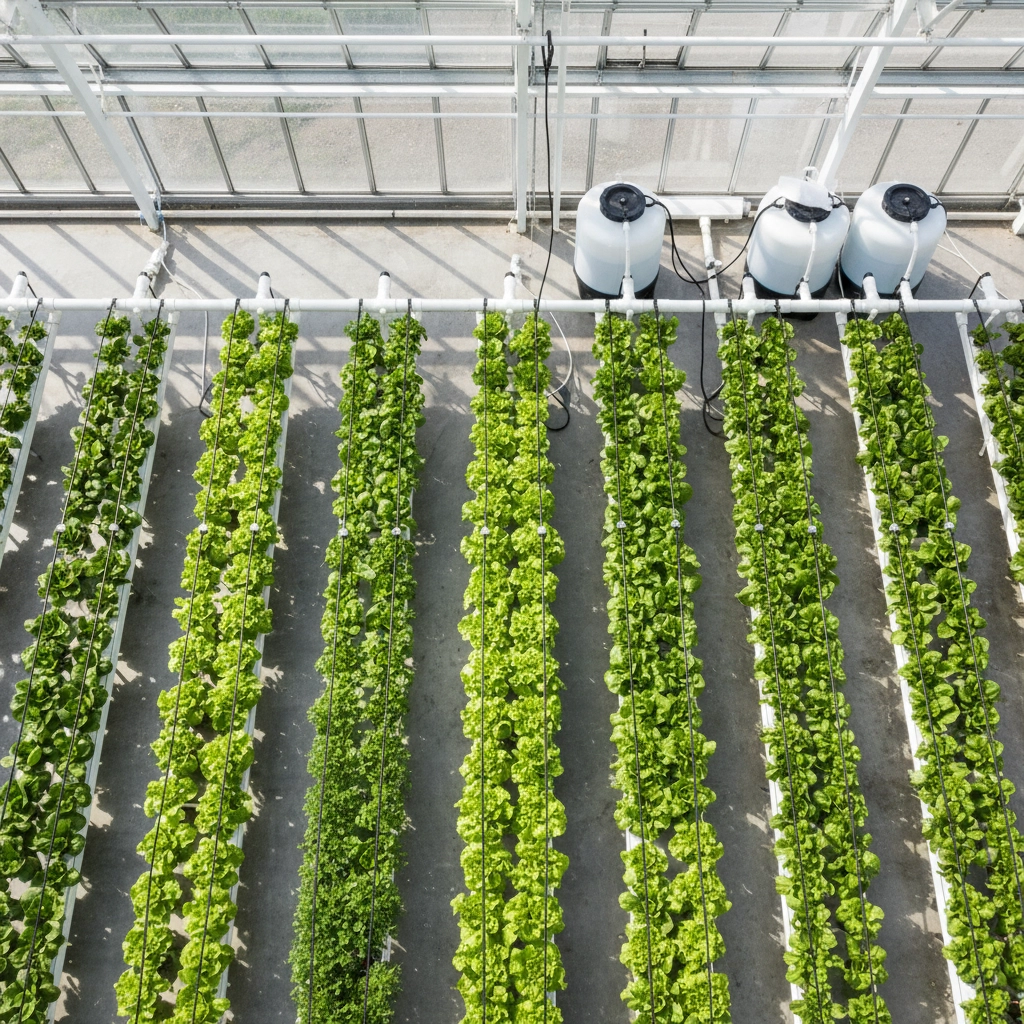Blog
Why Smart Growers Are Switching to Automatic Watering Stakes: 10 Reasons Your Plants Will Thank You
Sarah Martinez had been growing tomatoes in her greenhouse for three years when she hit a wall. Despite her best efforts, she couldn't shake the cycle of overwatering one week and underwatering the next. Her plants showed it: yellowing leaves, stunted growth, and frustrating root rot issues that killed entire crops.
Then she discovered automatic watering stakes. Within one growing season, Sarah's yields doubled, her water bills dropped by 40%, and she finally took that two-week vacation she'd been postponing for years. Her secret? She let her plants tell her exactly when they needed water.
Sarah's story isn't unique. Across the country, smart growers are making the switch to automatic watering systems, and their plants are thriving like never before. Here's why this simple technology is revolutionizing how we approach plant care.
The Science Behind Smart Watering
Automatic watering stakes work on a surprisingly simple principle: they deliver water directly to the root zone only when soil moisture drops below optimal levels. Using gravity-fed or sensor-based technology, these systems eliminate the guesswork that leads to most watering mistakes.

Unlike traditional sprinkler systems that waste water through evaporation or manual watering that relies on your memory and schedule, automatic stakes create a closed-loop system. Water moves from the reservoir through the stake directly to where plants need it most: their roots.
10 Reasons Your Plants Will Thank You
1. Consistent Moisture Levels Prevent Plant Stress
Plants perform best when soil moisture stays within their optimal range. Mark Thompson, a commercial greenhouse operator from Colorado, noticed his pepper plants stopped experiencing the weekly growth spurts and setbacks that plagued his operation. "Once we installed automatic stakes, our plants grew steadily instead of that feast-or-famine cycle we dealt with before," he explains.
The stakes maintain consistent moisture without the dramatic swings that stress plants and trigger survival responses like premature flowering or leaf drop.
2. Eliminates Root Rot and Fungal Issues
Root rot killed more plants than any pest in Maria Gonzalez's indoor garden until she switched to automatic watering stakes. The precision delivery means water doesn't pool around stems or sit in saucers, creating the damp conditions fungi love.
"I used to lose about 20% of my seedlings to root rot every season," Maria recalls. "Last year, I lost exactly zero plants to fungal issues."
3. Promotes Deeper, Healthier Root Systems
When plants receive water at root level consistently, they develop more extensive root networks instead of shallow surface roots. This deeper root system makes plants more resilient during dry periods and improves nutrient uptake.
Commercial grower Jake Peterson documented root development in his tomato crops and found plants with automatic watering had 35% more root mass than traditionally watered plants.

4. Saves Up to 70% of Your Watering Time
Time savings might be the most immediate benefit growers notice. Instead of spending 30-45 minutes daily checking and watering plants, automatic stakes reduce this to a weekly 5-minute reservoir refill.
"I used to spend my entire Sunday morning watering," says hobby grower Lisa Chen. "Now I check the reservoir once a week and spend that time actually enjoying my garden."
5. Slashes Water Bills and Waste
Traditional watering methods lose 40-60% of water to evaporation, runoff, and overspray. Automatic stakes deliver water directly to roots with minimal waste, typically reducing water consumption by 50-70%.
For greenhouse operator David Wright, this translated to $200 monthly savings on his water bill. "The stakes paid for themselves in four months just through water savings," he notes.
6. No Electricity Required
Most automatic watering stakes operate on gravity and capillary action, requiring zero electricity. This makes them reliable, low-maintenance, and suitable for any growing setup: from windowsill herbs to large greenhouse operations.
The simplicity means fewer things can break, and you're not dependent on power availability or complex controls.

7. Perfect Vacation Solution
Nothing kills the joy of travel like returning to dead plants. Automatic stakes can maintain proper moisture for weeks without intervention. Summer vacation season used to mean asking neighbors to water or coming home to crispy plants.
"We took a three-week European trip last summer," shares retired couple Bob and Janet Stevens. "Every single plant was healthier when we returned than when we left."
8. Prevents Overwatering Disasters
Overwatering kills more houseplants than drought. New gardeners especially struggle with the "kill them with kindness" tendency. Automatic stakes remove this temptation by only releasing water when sensors detect dry soil.
Beginning grower Amanda Foster learned this lesson after killing her third batch of herbs. "The stakes taught me what proper watering actually looks like. My plants have never been healthier."
9. Adapts to Different Plant Needs
Different plants require different watering schedules. Automatic stakes can be adjusted for various moisture preferences, allowing you to grow moisture-loving basil alongside drought-tolerant succulents in the same system.
This flexibility means you're not locked into watering everything the same way, which is one of the biggest mistakes in multi-plant gardens.
10. Reduces Pest and Disease Pressure
Consistent, appropriate moisture levels keep plants healthy and better able to resist pests and diseases. Stressed plants from irregular watering become magnets for aphids, spider mites, and other problems.
Integrated pest management specialist Dr. Rachel Kim observed 60% fewer pest issues in gardens using automatic watering compared to traditional methods. "Healthy plants are the first line of defense against pests," she explains.
Real-World Implementation Tips
Start Small and Scale Up
Don't convert your entire garden overnight. Test automatic stakes on a few plants first to understand how they work with your specific growing conditions. Each plant variety and pot size may require slight adjustments.
Choose the Right Reservoir Size
Calculate roughly one gallon per week per large plant. Smaller herbs might share reservoirs, while tomatoes need dedicated larger containers. Undersized reservoirs mean frequent refills, defeating the convenience factor.
Monitor Initially, Then Trust the System
Check soil moisture manually for the first week to verify the stakes are working correctly. Most growers find they can trust the system completely after this initial verification period.

Common Mistakes to Avoid
The biggest mistake is over-complicating the setup. Automatic watering stakes work best when kept simple. Avoid elaborate multi-zone systems initially: master basic stake operation first.
Don't assume all plants need the same watering frequency. Adjust stake sensitivity based on plant type, pot size, and growing conditions. Succulents need different settings than leafy greens.
Is It Worth the Investment?
For most growers, automatic watering stakes pay for themselves within one growing season through water savings, reduced plant losses, and time savings. The peace of mind alone justifies the investment for many gardeners.
Consider this technology essential if you travel frequently, tend to forget watering schedules, or want to scale up your growing operation without proportionally increasing maintenance time.
The transition to automatic watering represents a shift from reactive to proactive plant care. Instead of responding to plant stress, you prevent it. Your plants will thank you with healthier growth, better yields, and fewer problems.
Ready to join the smart growers who've discovered this game-changing technology? Check out our complete selection of growing supplies to find the perfect automatic watering solution for your garden. Your plants: and your schedule( will never be the same.)
